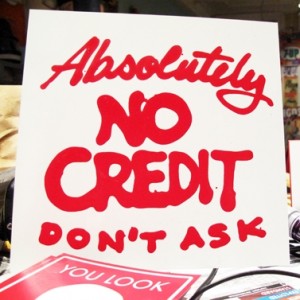When I was young, one of the things that was most likely to cause a fight was when someone changed the rules in the middle of the game. Generally someone else was a victim of the new rule and wasn’t too happy about it. Fortunately, it was just childish stuff. Even if there was a fight, everyone would make up the next day.
But, it does remind us of an interesting point that’s relevant today. We make plans based on how we understand the rules of the game. A change in those rules could work against us. And, as adults, unlike kids, we’re playing for keeps.
A couple of articles brought this home to me. The first is Credit Card Issuers: Buy Something or Else, by Kelli B. Grant. She points out that credit card companies are actively reducing the number of customer accounts, especially those that haven’t been used lately. According to Grant, issuers including Chase, Bank of America, American Express, and Citibank are reducing available credit lines.
This poses two big problems for consumers. First, their FICO credit score could drop. One factor in the credit score is the percentage of available credit available to the consumer. Reducing unused credit lowers your score even if you do nothing wrong.
The second problem is that many consumers use available credit as an emergency fund. Instead of having savings sitting in an account, they plan to use credit cards in case of a job loss or other emergency.
How important that can be to consumers (and ultimately the whole economy) becomes clearer if you read Credit Cards Are the Next Credit Crunch, by Meredith Whitney. According to Whitney, there is approximately $5 trillion in available credit to all consumers. And, about $800 billion is currently being used.
In the last quarter of 2008, banks reduced available credit by $500 billion. And, Whitney estimates that half of all available credit will be eliminated by the end of 2010. To put it another way, that’s $2.5 trillion that was available to be spent, that is no longer available!
What can you do? Frankly, there aren’t many easy options. All of the easiest choices should have been started years ago. But, there are some things that you can do to minimize the damage.
First, choose which credit cards you want, and use them periodically. You don’t need to carry a balance. But, use the card to charge something. By making a purchase on the card, your account will show recent activity. That’s one of the triggers to close an account. When the bill comes, pay it completely.
Limit unnecessary expenses now. Build up your cash reserves. Unless you could survive for six months on your current savings, it’s time to get real serious about cost-cutting. The internet (including stretcher.com) can provide you with all kinds of tools to reduce expenses. Remember that no one can suddenly decide to reduce your savings account. It’s yours.
Pay down any credit card balances. You can create more unused credit by reducing the existing balance. Obviously, this takes time and should have been started before. But, better to start now than to not start at all.
Don’t count on your credit lines. Expect them to drop. If Whitney’s projections are right, you could lose 50% or more of your credit lines. What will you do if you run out of savings and available credit? What steps would you need to take? Who’s help would you seek? Think through these things now.
Don’t wait until you lose a job to take action. This could be very serious. Experts say that one of the major causes of the 1930’s depression was that the supply of money shrank. Cutting available credit lines has the same effect. And, as more people default, the banks will have additional reason to reduce even more available credit. So the noose gets tighter.
Now is not the time to panic, but it certainly is time to make responsible preparations.
Keep on Stretching those Dollars!

